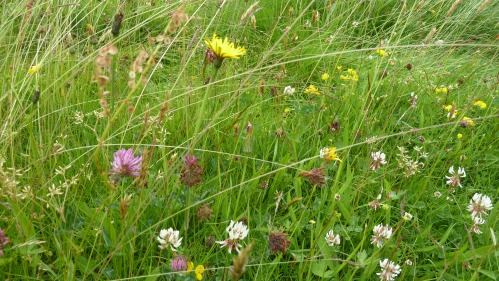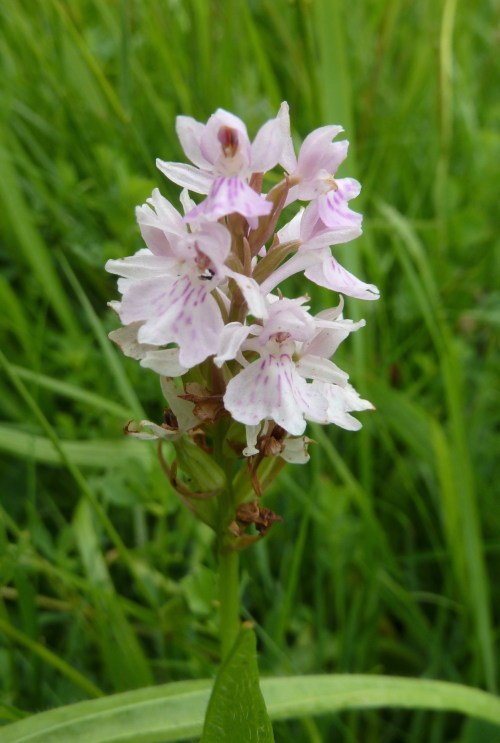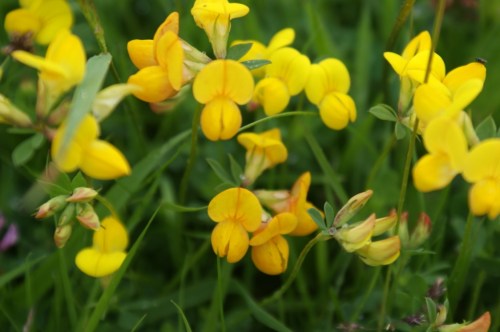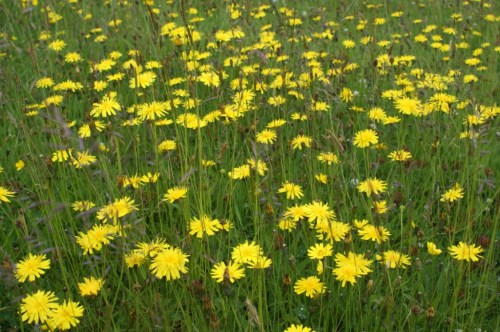
The orchid meadow
There is always something new to discover in Adel Woods, and two years ago our treasurer, Judith, brought to our attention a secluded meadow with a beautiful display of common spotted orchids.

Common Spotted Orchid
The meadow is a wonderfully tranquil oasis in the woods, under threat of two kinds of change – firstly the normal process of succession, whereby open grassland slowly changes into oak woodland; and secondly the invasion of Himalayan Balsam.
The meadow already has a range of small oak trees growing within its borders, and it is surrounded by thousands of specimens of Himalayan Balsam – many of which are just coming into flower and will send their seeds onto the meadow.

Removing trees
Our task today, under the guidance of Steve Joul, senior ranger with Leeds City Council, was therefore threefold. Firstly, to find out how many common spotted orchids we have in the meadow. Secondly, to remove some of the trees. Thirdly, to remove as much of the Himalayan Balsam as possible from the immediate vicinity of the orchids.
The great thing is that there was an even more splendid display of orchids than the last couple of years. Steve was keen to count them and came to a figure of 2,690! – a figure far higher than any of us expected.
As Steve counted the orchids, the rest of us cleared oak trees (about 5) and pulled up Himalayan Balsam plants. Your correspondent estimates that between us we pulled up around 20,000, and we were able to clear the entire southwest boundary of the species.

After working on the orchid meadow, we went to have a look at Adel Bog, another beautiful secluded spot in the woods. Here we were treated to a wonderful display of heath spotted orchids, bog asphodel, tormentil and other plants.

Heath Spotted Orchid with yellow flowers of the Bog Asphodel in background
Heath spotted orchids (dactylorhiza maculata) are very similar to common spotted orchids (dactylorhiza fuchsia). Steve can tell you the difference!
Another wonderful morning in Adel Woods.

Inspecting the flora on Adel Bog

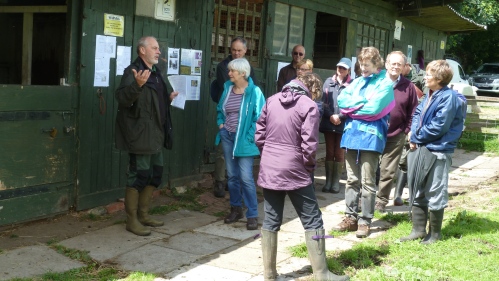 Thank you to Alan and Diane Yarker who welcomed Friends of Adel Woods to their smallholding today – to mark National Meadows Day.
Thank you to Alan and Diane Yarker who welcomed Friends of Adel Woods to their smallholding today – to mark National Meadows Day.